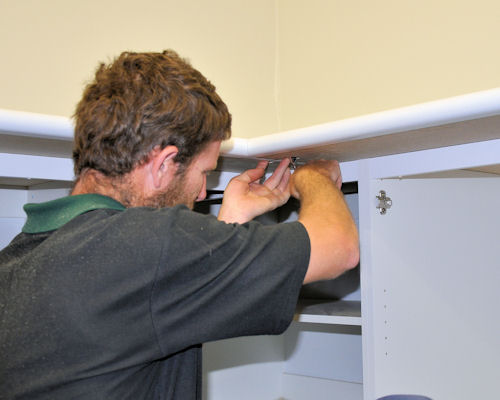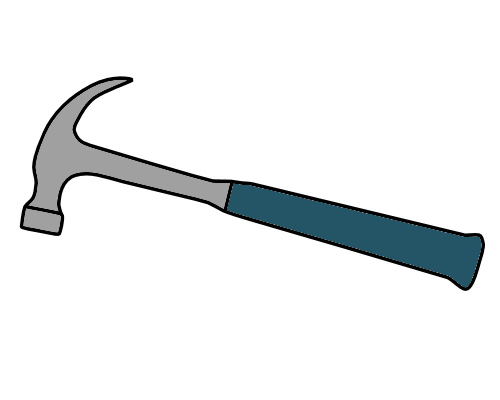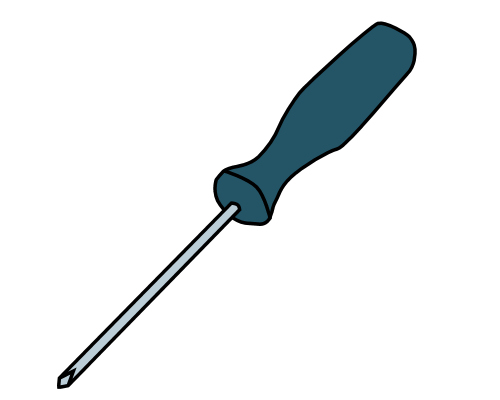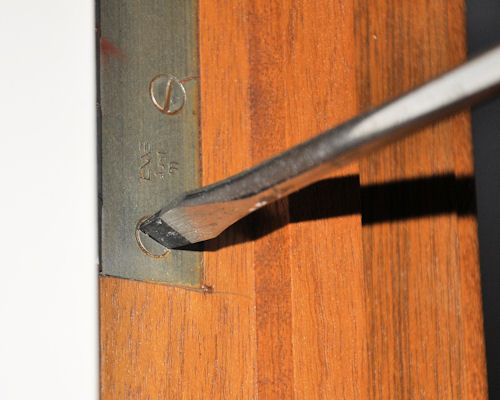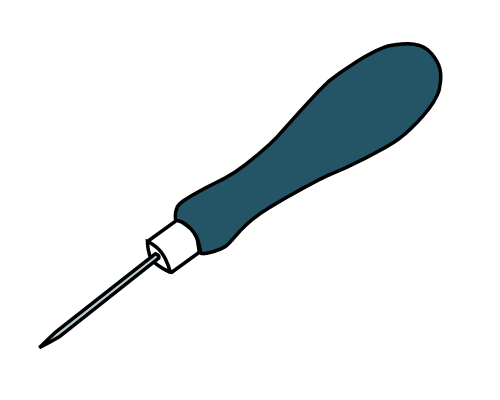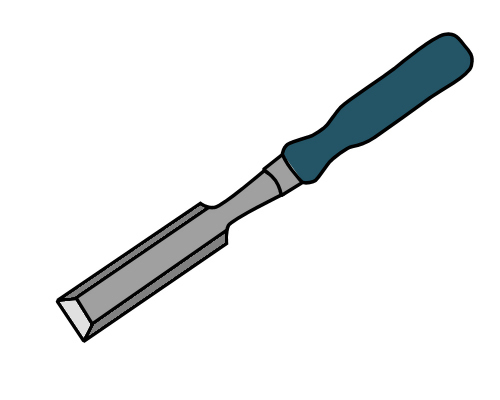Hand tools
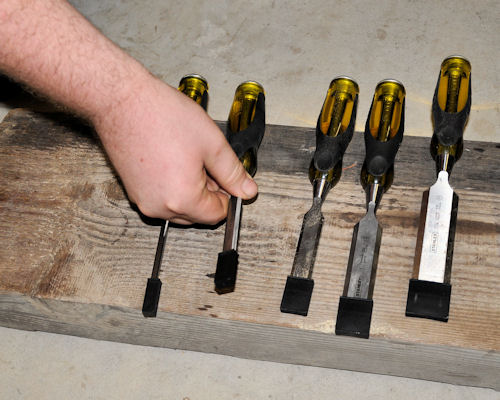 Audio for slide 8 (mp3 |6|KB)
Audio for slide 8 (mp3 |6|KB)
Keep your chisels sharp, and hone them regularly while you're working.
When you're not using the chisel, make sure the edge is well protected from anything that might burr or blunten it, especially when it goes back into the toolbox.
This could include putting a cap on the end or rolling it up in a protective bag.

When you're not using the chisel, make sure the edge is well protected from anything that might burr or blunten it, especially when it goes back into the toolbox.
This could include putting a cap on the end or rolling it up in a protective bag.

Learning activity
 Audio for slide 9 (mp3 |6|KB)
Audio for slide 9 (mp3 |6|KB)
Sharp chisels are a joy to use. Blunt chisels, by contrast, don't cut cleanly and can be downright dangerous if you have to apply excessive force to use them. So good hand-sharpening techniques with an oilstone are an essential part of every cabinetmaker's professional skills.
What are your skills like with hand sharpening? If you're unsure about the proper techniques to use, ask your supervisor or trainer for assistance. If you're already confident with your general technique, it's still worth practising your skills and trying to get the best result possible each time you hone the edge.

Go to Power tools
Industry Network Training and Assessment Resourses
© 2016 Workspace Training


